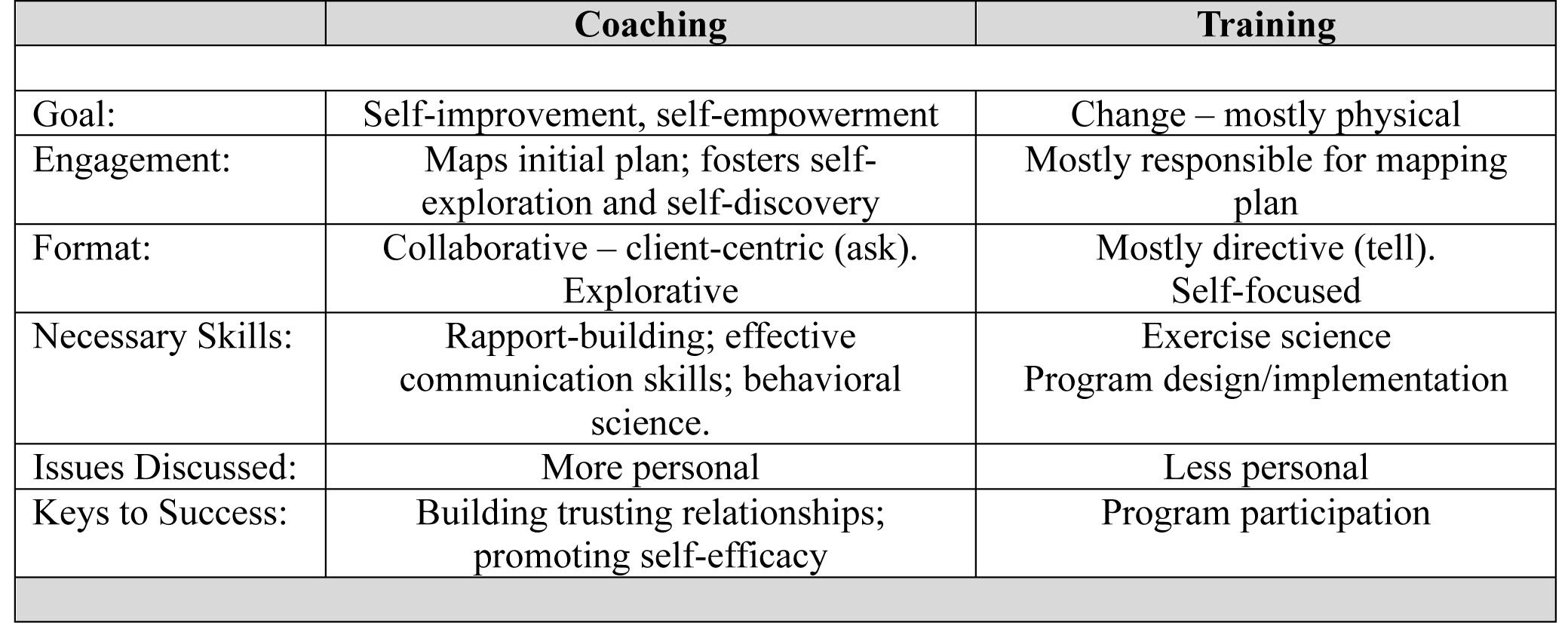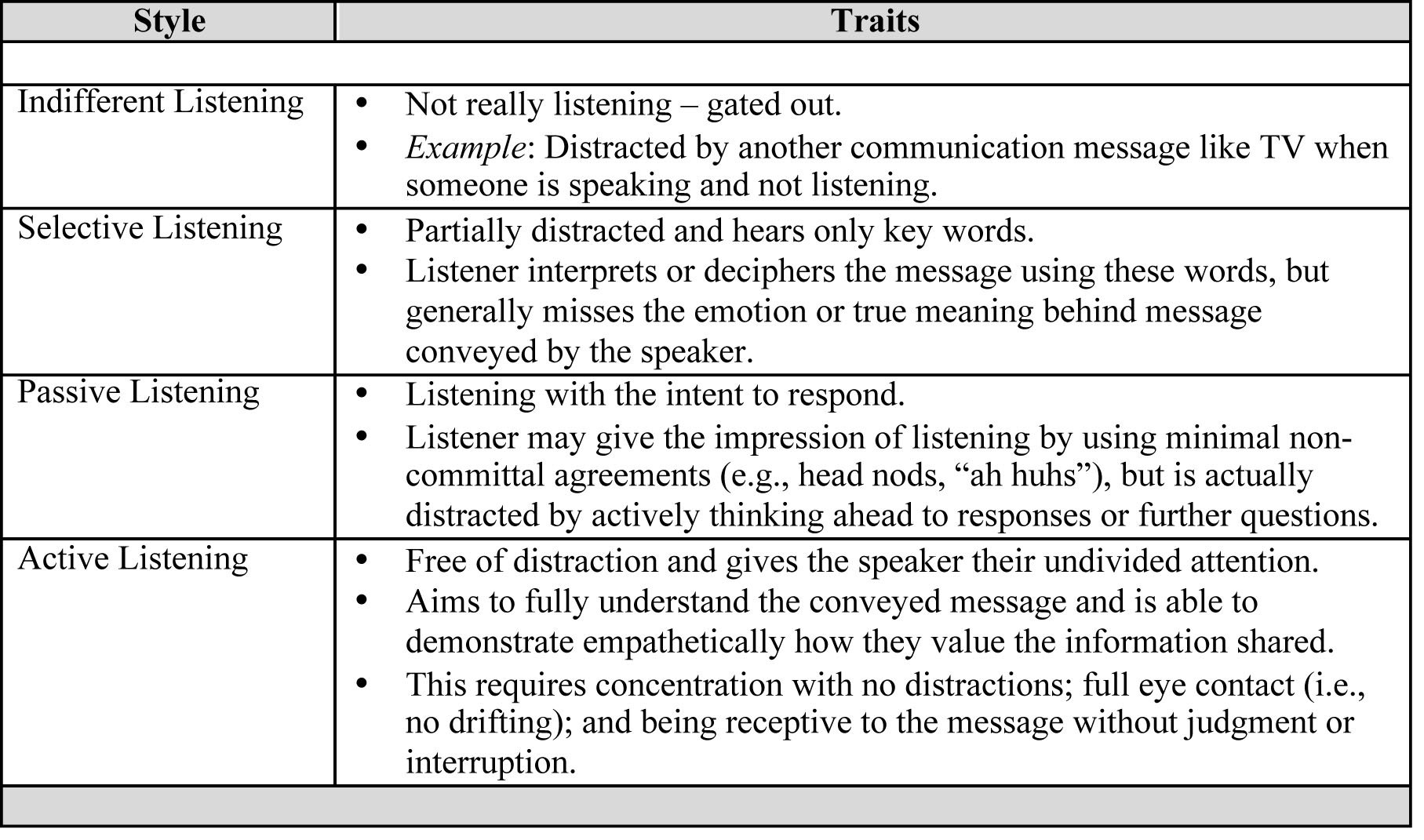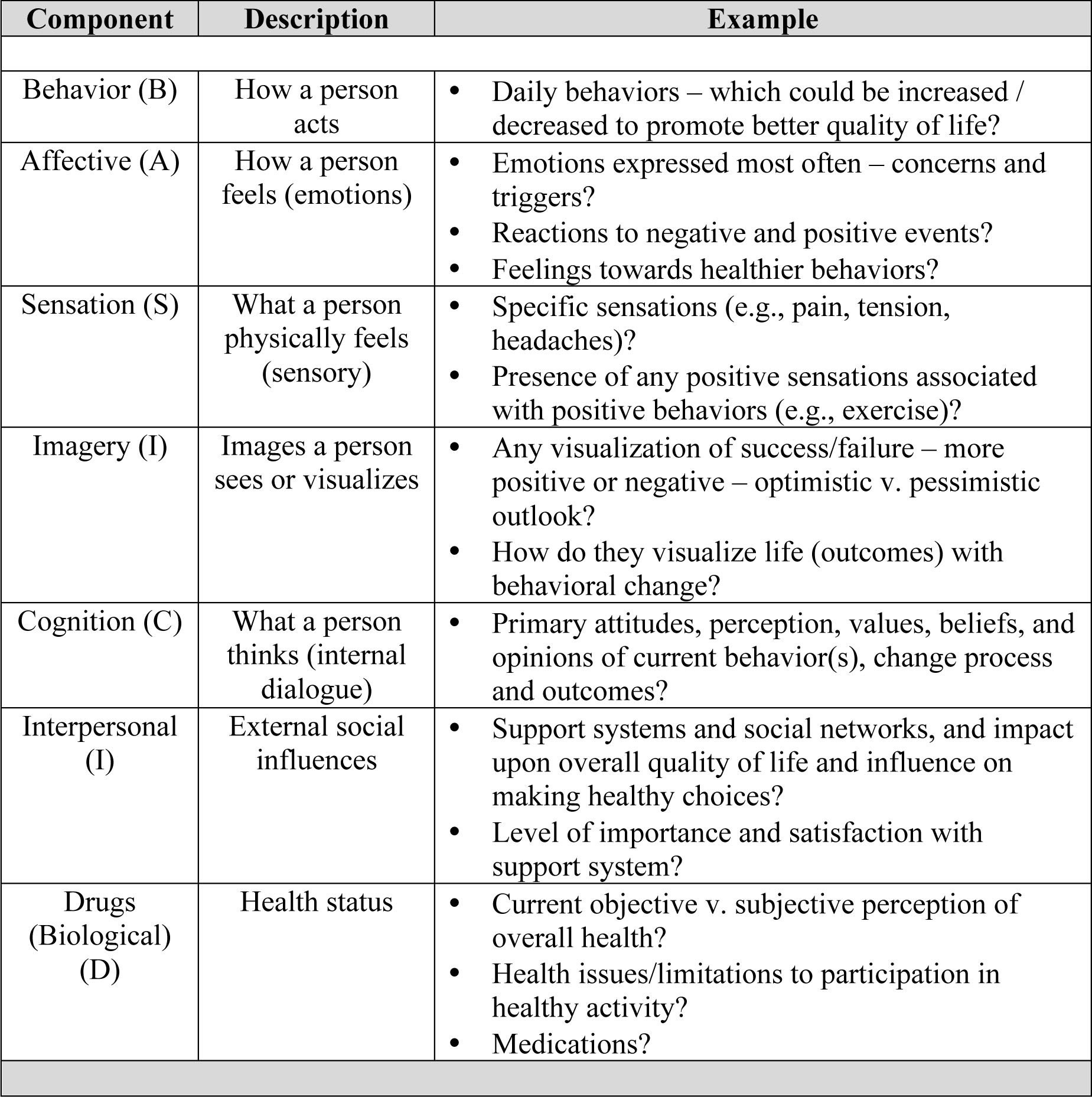Are you clicking with your clients? Effective communication is a two-way street, and most of us need a little practice and guidance when it comes to our professional interactions with clients-especially new clients as we dance that awkward rapport-building dance. Strengthen your communications skills with the techniques shared here.
Many personal trainers have mastered the science of exercise and program design – gathering the necessary health and fitness information (Investigation Phase), mapping out a plan (Planning Phase) and then implementing the program (Action Phase). Unfortunately, where we as fitness professionals generally fall short is our skills and abilities in developing rapport and communicating effectively with clients (Rapport Phase), and this becomes very evident when watching trainers first meet prospective or new clients.
As illustrated in Figure 1, building rapport is an initial and ongoing process, yet omitted by many trainers who direct their initial conversation towards understanding an individual’s needs and goals (i.e., gathering information) rather than making a connection. Not that this is negligent in, but it is important to remember that rapport is instrumental to building successful professional relationships. It is more than being polite and empathetic – it is the process of taking the time to actually show that person how much you care about them by developing close and harmonious relationship. Ultimately you’ll understand their feelings and ideas, and can successfully communicate openly and effectively to help them attain what they need and truly desire (1,2). It is a relationship marked by harmony, conformity, accord, and affinity, and the overall relationship can stifle without it, (3). However, it is also important to recognize that not everyone seeks or cares for rapport, at least not initially, and herein lies the true art of being an effective communicator. Strong communicators are skilled at quickly recognizing personality trait(s) (e.g., sociability, dominance) and ascertaining how much rapport in initially appropriate by adhering to the cardinal rule of treating others the way they want to be treated.
Figure 1 – Key responsibilities to successful professional relationships.
As fitness continues to migrate into wellness, the trainer of tomorrow will evolve to coach as well as training. Although this will necessitate the acquisition of additional knowledge and skills, this increase in scope of service will undoubtedly boost the relevance and value of fitness professionals. They’ll now be able to exert more influence in supporting and empowering individuals to achieve their unique goals and sustain change. However, non-athletic coaching and training are distinctly different and in NASM’s recently-released Behavioral Change Specialization (BCS) these differences, as well as the key roles and responsibilities of coaches and trainers are outlined (1). Table 1 illustrates some of these distinctive differences and demonstrates how coaching is heavily reliant upon rapport, strong communication skills and empowering sustainable behavioral change.
Table 1: Key differentiators between coaching and training
Rapport relies profoundly upon effective communication. Communication is primarily composed of words, which simply convey factual information; and then voice tonality and non-verbal communication that convey the true emotion (meaning or purpose) behind the communicated message. Contrary to popular belief where we were taught that words comprise only 7% of our communication in comparison to tonality and nonverbal communication that constitute the remaining 38% and 55% respectively, they are all equally important. This 55-38-7 rule, conceived by Albert Mehrabian and colleagues at UCLA in 1967 to explain his research findings, and by his own admission it was not intended to explain human conversation (4). Nonetheless, as effective communicators, we need to attend to each and align each congruently so that we are perceived as genuine, warm and trustworthy. It all begins with our moment of truth, that first set of impressions we make upon someone where many decisions are made regarding the nature of the relationship moving forward. Michael Solomon, PhD, psychologist, at New York University coined the phrase ‘7-11 rule’ where he estimated that people make 11 decisions about you within the first 7-seconds of meeting that can forever shape the nature of the relationship. As practitioners, successfully attending to five simple tasks can help shape those initial impressions to be positive (5-6):
- Open – your mind (attitude) and body. This is not the time to be judgmental or adversarial. Open you mind - your ‘righting reflex’ or desire to inform and/or educate will come later. Orientate your body (belly button, heart) towards the person to demonstrate your genuine interest in learning about them.
- Eye – maintain a relaxed look as it instills comfort. Emphasize the social gaze, the triangle between the eyes and mouth and spend 80-90% of the time in this area. Although averting one’s eyes while a person speaks conveys mixed messages ranging from submission to disinterest, be attentive to cultural and ethical differences.
- Beam – a genuine smile and even laughing are deeply rooted with making stronger interpersonal connections (i.e., bonding). It increases brain activity, releasing various compounds (e.g., endorphins, dopamine) that build more pleasurable experiences. However, smiles must be genuine as fake smiles are identifiable. A natural smile causes a slight eye wrinkle (action of the zygomatic muscles) and an upward lip turn – the whole point of saying cheese. Practice holding a pencil in your mouth between your lips (not teeth) to activate these muscles.
- Hi – your salutation and handshake gesture. Personalize your initial dialogue by using the person’s name a few times – it also helps you remember them as well as any memorable stories about them. The handshake conveys a tremendous amount of information about a person; the firmness of the grip, the orientation of the hands, the use of the second hand, willingness to shake (germaphobe), and more. When in doubt, slowly extend a palm-open and upward-facing invitation and when the person starts to reciprocate, change you hand orientation to meet so that both hands are aligned vertically with the floor.
- Lean – your body orientation should convey interest and connectivity. Lean slightly forward towards the person while respecting personal space (18 – 48” is ideal in most cultures), and then subtly match movements. If a person does not gesture much, yet you do, this may prove to be distracting, as does fidgeting or adjusting your body position while they are speaking.
In behavioral change and coaching classes I teach at San Diego State University, we frequently use role-playing scenarios to evaluate and self-evaluate our communication strengths and weaknesses. Students take turns role playing the initial dialogue between professional and client/patient, during which one observer will video tape (for self-evaluation purposes), one will watch (with ears covered), and one will listen (with eyes closed) for congruency in the message and efficacy in communicating. They also explore ways to build rapport by initiating dialogue and connecting through various off-beat topics (e.g., talking about needlework, Chia Pets, and anthills), and they evaluate listening-speaking ratios – aiming for the 70-30 rule where you listen 70% of the time, and try to speak only 30% of the time.
Ask Listen Understand Respond
Four key skills to effective communication generally involve (in order) asking open-ended questions to learn about the person; active or immersed listening as opposed to passive or selective listening; understand the true message being communicated to us via words and emotions; and lastly to respond after you have a full grasp of the situation. To quote Steven Covey, author of The 7 Habits of Highly Effective People, “Seek first to understand, then to be understood,” we need to first listen and understand people during the rapport and investigation stages before we decide to respond with any proposed solutions (7). Many of us experience difficulty in separating ‘understand’ from ‘respond’ as we often listen with the intent to respond (i.e., passive listening). Keep in mind however, that listening first can guide you to asking the right questions. After all, it was Jonas Salk who discovered and developed the first Polio vaccine who said that, “what people think of as the moment of discovery is really the discovery of the right question.” Sometimes listening first can lead us to the right questions.
Listening is certainly an art form and is our primary non-verbal communication skill. It captures both the content and the emotions behind a speaker’s message. Humans have the capacity to listen and process up to 500 words per minute in comparison to speaking approximately 125 – 250 words a minute, we are better suited to listening, and thus should do it more effectively. Various listening styles exist (Table 2), each with their own unique traits and characteristics, but active or immersed listening is what we should strive to incorporate as professionals (1, 2, 8).
Table 2: Different Listening Styles
Training yourself to listen more actively is no easy feat. It involves practice and discipline. Try incorporating the following strategies for more effective listening:
- Become more mindful – avoid being judgmental about the message as it is shared – don’t get tripped up on, or distracted by any emotional hot buttons.
- Be attentive to all non-verbal cues and verbal tonality.
- Control your external distractions – physical distractions like people and sounds that can be easily controlled with some careful planning like meeting clients in a quiet location.
- Filter out your own internal chatter – control any distracting thoughts or thinking ahead to your answers or next questions. Disclose (and seek consent) before engaging in any dialogue that momentary pauses will occur for you to take notes and devise formulate questions.
- Focus completely on the individual – avoid multi-tasking such as simultaneously writing while listening – you will miss much of the non-verbal message. Use transitional these pauses to makes notes, reflect, paraphrase and think of your questions.
- Ask more open-ended questions when possible to help you gain more general information on the what, how, and why, and probing questions to seek greater understanding and clarification of the message. More closed-ended questions are effective to summarize or seek specific information on the who, which, would, will, and do.
One very effective skill set to use when communicating with clients is to identify the connection between how they communicate and their current thinking and behaviors. In the NASM BCS course, the authors shared a unique perspective on how to use Arnold Lazarus’s Multimodal Screening (MMS) model as a listening tool although it was originally developed to help practitioners understand an individual’s thinking and behaviors (1). The MMS recognizes that humans behave (act / react), emote (have /express feelings), sense (respond to various stimuli), imagine (create images / sounds / events), think (beliefs / opinions / values / attitudes), and interact socially with others and termed these traits their BASIC ID:
- Behavior
- Affective
- Sensation
- Imagery
- Cognition
- Interpersonal
- Drugs (biological)
Two key factors for successful and sustainable behavior change are building the importance for change and its relevance to one’s immediate life. During the investigation phase, ask one simple open-ended question that will help you understand the importance and relevance by how they connect their communication to their behaviors or actions. Ask how their life would be different if they could accomplish the changes they desire and ask them to take a moment to carefully think about their response. When talking with Joe, ask him “Joe, given the challenges you have just shared with me, how would your life differ if you managed to make these changes?” Now listen to the manner in which he responds, drawing from the information provided in Table 3. For example, if Joe mentions that by losing 50 pounds he would be able to once again play with his grandkids and it would possibly reduce the amount of back discomfort he lives with, then he is connecting his communication to behaviors (playing with his grandkids) and sensations (reduced discomfort). Whenever you need to build importance, relevance or even find some additional motivation (when it appears to be waning), use those same traits he expressed (i.e., behaviors, sensations).
Table 3: Using the BASIC ID traits in communication to identify importance and relevance
There are many additional tools and strategies that effective communicators employ when communicating with other people and include:
- Voice tonality – inflection, volume, pitch, speed and rhythm. For example, ending your message on an upward inflection conveys doubt or a lack of confidence (i.e., questioning), whereas ending on a downward inflection conveys more confidence and authority. For example, articulate the following statement out loud, but use both upward and downward inflections each time and note the differences – “we will perform a movement screen”.
- Personality Indexing – a critical skill set needed to determine how to appropriately treat and communicate with people. For example, individuals scoring low on sociability don’t value much rapport initially or at any point in comparison to people that are highly sociable. Given this knowledge, a professional can then treat individuals accordingly (as they want to be treated). Various indexes exist including the Myers-Briggs Type Indicator (MBTI), DiSC Profiling, Daves and Holland Model and the OCEAN personality dimensions. A low dominance and low sociability person for example is more inclined to respect you more if you provide them with facts and statistics that appeal to their need to be detail-orientated and correct. Furthermore, they will greatly appreciate consistent follow-ups and a person who is well-prepared, detail-orientated and organized. Even the way we communicate reflects our personality styles – the rate at which we speak, and the frequency and conviction in vocal inflection provides insight into one’s personality. For example, a person speaking at a higher tempo rate with higher inflections (i.e., animated, energetic and charismatic) is probably highly sociable and dominant and values being stimulated by incentives, challenges and rewards that are offered to them.
- Emotional Intelligence (EQ) – reflects one’s ability to recognize and understand emotions, and how one uses this awareness to manage oneself and relationships with others. EQ is divided into personal competence and social competence. Each competence plays a critical role in how you sense and manage you own emotions in the moment while identifying the emotions of others and managing those interactions successfully. It is estimated that EQ reflects 58 – 60% of job performance whereas the Intelligence Quotient (IQ) reflects just 10 – 25% of job performance (9). Approximately 90% of top performers in business possess high EQ scores while only 20% of low performers in business have high EQ scores, illustrating just how important understanding EQ is to overall business success.
In closing, we’ve aimed to highlight a few of the critical communication skills needed by personal trainers and coaches to succeed and not simply survive as a professional. Although many of us often believe we communicate effectively with others, how often do we take the time to evaluate the true effect of our message upon the receiver (i.e., perception of the message) and the consequence of our dialogue? As mentioned previously, effective communication is an art and it requires a significant investment of time, effort and resources. Take the time to conduct you own S.W.O.T analysis. Evaluate your communication Strengths and Weaknesses using any self-evaluation technique or feedback from others; identify Opportunities or areas in which to improve or showcase your communication skills; but never allow yourself to become complacent (Threats) by thinking you are an effective communicator or the message you think you are communicating is aligned with what you think your clients perceive. We often spend much of our continuing education budget and time focused upon the exercise sciences, yet largely ignore perhaps what is the most influential determinant to our overall success – communication. Perhaps it is time to rethink the way we train and retrain the way we think.
References:
- National Academy of Sports Medicine, (2014). Behavioral Change Specialization. Chandler, AZ., NASM.
- American Council on Exercise, (2013). ACE Health Coach Manual, San Diego, CA., ACE
- Egan G, (2010). The skilled helper: A problem management and opportunity development approach to helping (9th). Brooks/Cole, Pacific Grove, CA.
- Mehrabian A, (1972). Nonverbal communication. Chicago, IL, Aldine Atherton, Inc.
- Driver J, and Van Aalst M, (2010). Say more than you think. New York, NY, Crown Publishers.
- Pease A, and Pease B, (2006). The definitive book of body language. New York, NY, Bantam Dell.
- Covey SR, (2004). The 7 habits of highly effective people. New York, NY, Simon and Schuster.
- Moore M, and Tschannen-Moran B, (2010). Coaching Psychology Manual. Baltimore, MD. Wolters Kluwer Health-Lippincott, Williams and Wilkins.
- Coleman D, (1994). Emotional Intelligence – why it can matter more than IQ. New York, NY, Bantam Dell.



















